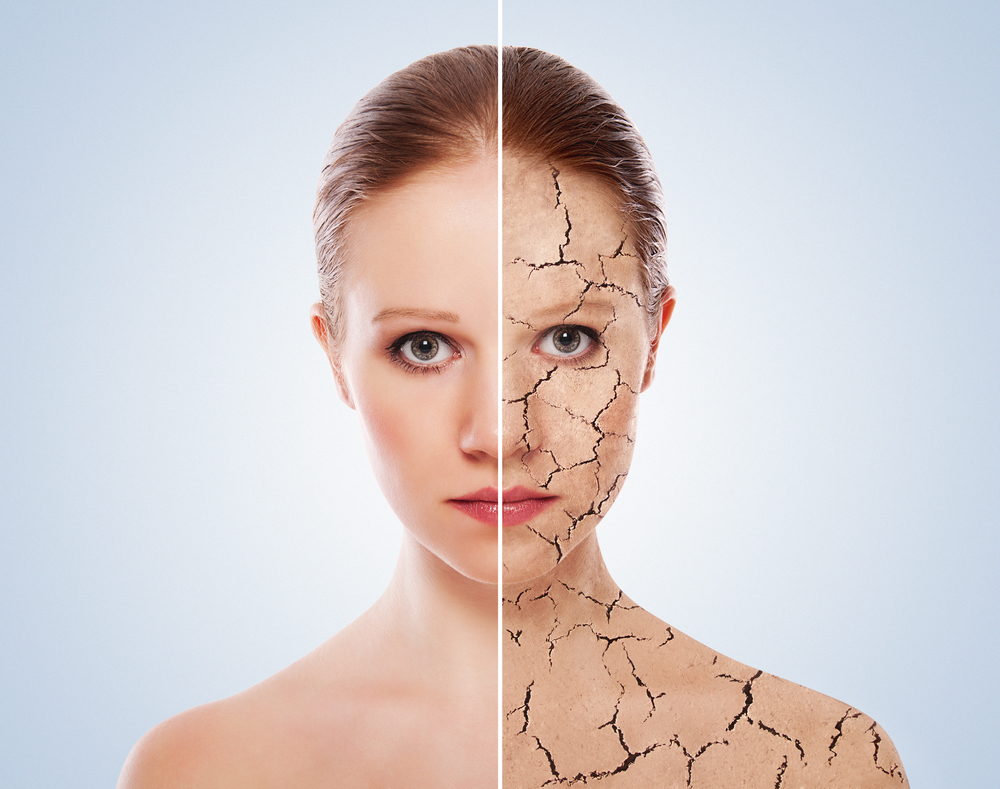For those of us with acne-prone skin or those who suffer with pigmentation from scarring, we are constantly on the lookout for a product that can help keep our pores clear to prevent future breakouts and also remove the dull outer layer of dead skin cells, to reveal the fresh, glowy skin underneath. The powerful chemical that can do both is Glycolic Acid.
It’s easy to add Glycolic Acid into your skincare routine as loads of beauty products now contain this clever molecule. Whether it be a toner, a moisturizer or a more targeted beauty item like a mask, this acid works hard to improve your skin overall vibrancy. Glycolic acid is a water-soluble alpha hydroxy acid (AHA) made from sugar cane.
It is one of the most widely used AHAs in skin care products. AHAs are natural acids that come from plants. They consist of tiny molecules that are very easy for your skin to absorb. This makes them ideal for smoothing fine lines, improving skin texture, and other anti-aging uses.
Where You Can Find It
If you’re looking for glycolic acid, you have lots of choices. This skincare darling can be found in many over-the-counter (OTC) products. Try your local drug store, market, or skin spa. You will find plenty of cleansers, masks, toners, and moisturizers that contain glycolic acid. OTC glycolic acid products tend to come in strengths of up to 10%.
For stronger treatments, glycolic acid is also found in chemical peels. Light duty glycolic acid peels up to 30% strength can be done by an esthetician at the salon or skin spa. Stronger peels of up to 70% can be had at the dermatology office.
Even though glycolic acid is made from sugar cane, the sugar you buy at the store is not quite the same. Rubbing your face with sugar can exfoliate the skin and leave it feeling smoother. But it’s not going to give you the same results as glycolic acid treatment.
How Is Glycolic Acid Made?
Glycolic acid can be extracted from natural sources like sugarcane, sugar beets, pineapple, cantaloupe and unripe grapes. In fact, you can make your own with ingredients you probably already have in your kitchen. Combine cane sugar with plain yogurt for a moisturizing scrub that utilizes the benefits of both Glycolic and Lactic Acids.
Is it a natural product? It is traditionally a natural product, although it can now be synthetically generated too. It can be synthesized by combining formaldehyde and synthesis gas, which is a low-cost but non-natural option.
In most organic and natural skincare, Glycolic Acid is derived from natural agents like sugarcane – though it’s always worth checking to see where the Glycolic Acid in a product has come from.
What Does Glycolic Acid Do For Your Skin?
One of the major causes of breakouts – whether acne or blackheads – is the accumulation of dead skin cells in our pores. Sadly, that’s not the only cause: a buildup of sebum – the oil your skin naturally produces – and proteins that your skin generates can also lead to breakouts. That’s why people with oily skin are more prone to the occasional blemish.
Luckily for us, though, Glycolic Acid is a bit of a miracle worker here. Not only does it break down the bonds between dead skin cells, thereby immediately battling one of the factors for acne; its tiny size means it can really get down into the follicles – which is where you’ll find the piles of sebum and protein.
Once there, the acid works to loosen these troublemakers, leaving you clear-faced and breakout-free. So, Glycolic Acid is great for acne. But is that enough to keep our attention?
The Benefits Of Glycolic Acid On The Skin
As we age, we often find that our skin becomes drier. Those with oily skin – rejoice! Fewer breakouts are on the horizon. However, aging brings with it its own problems! Those same dead skin cells that clog up our pores also tend to stick around on the surface – which can lead to a general dullness, as well as settling into fine lines.
When we’re young, our naturally faster skin cycle counteracts this to a great extent, but as we age and our skin cycle slows down, newer cells are produced at a slower rate, and the defunct dead cells tend to stick around longer. By using a gentle exfoliant like Glycolic Acid, the old cells are encouraged to detach from the newer, more vibrant cells, leaving your face looking radiant.
Its collagen-stimulating properties also mean that fine lines are filled out and skin appears more elastic. If you couple Glycolic Acid with an ingredient which stimulates cellular renewal, like Retinol, you’re onto a winner.
Even more impressive is the fact that just by using a product containing Glycolic Acid, you’re prepping your skin to absorb other ingredients with more efficacy. It even helps makeup to cling to the skin.
Side Effects of Glycolic Acid
It is important to think about any potential adverse reactions as well as evaluating if the pros outweigh the cons. Many commercial skin care products generally contain low concentrations of Alpha Hydroxy Acids (AHAs) such as Glycolic Acid, usually not exceeding 10%. This low strength renders it generally safe to use on the skin – higher concentrations are usually applied by skincare and medical practitioners.
However, even though it’s generally safe for the skin, Glycolic Acid, as well as others in the AHA family, can make your skin more sensitive to sunlight. This is because it removes the layer of dead skin cells, leaving new cells on the surface.
The same way that waxing body hair gets rid of a layer of skin, the new, exposed skin underneath is more vulnerable to damage from the sun’s UV light. An easy solution to this issue is to apply products containing Glycolic Acid at night and applying SPF in the morning, something that ought to be done normally.
Sadly, Glycolic Acid can also cause some mild irritation to the skin. Because of this, it’s always a good idea to do a patch test before applying the product to your entire face. If you do use Glycolic Acid and feel your skin becoming itchy, swollen or turning red, rinse off the product immediately.
Which Skin Type Is Glycolic Acid Suitable For?
Glycolic Acid can be beneficial for anyone regardless of their skin type, however, its most remarkable effects are seen with people who have oily, worn, or aging skin. The clearing of pores can be beneficial to all, specifically those living in urban areas or often engaging in activities that leave residues on their face.
Similarly, regular exfoliation is beneficial to everyone: it removes the dull top layer and lets your skin glow. However, mature skin, which is more likely to accumulate skin cells due to the slowing down of the skin cycle – will have the most marked improvement.
Meanwhile, the stimulation of fibroblasts means an uptick in collagen production, which again is most obvious in mature skin, which is typically lacking elasticity.
How to Use Glycolic Acid Safely
In general, glycolic acid is very safe for your skin and works well. To keep your skin safe, though, there are a few things to know before using glycolic acid. First and foremost, you must wear sunscreen whenever you are using glycolic acid treatments. Like all AHAs, glycolic acid can make your skin more sensitive to the sun.
You don’t want to undo all the good your glycolic acid is doing, nor do you want to end up sunburnt. Allow your skin to get used to glycolic acid. If you are using an OTC product, start off by applying it just three times per week for a week or so. If your skin isn’t red or irritated, try using it four times a week for a week or two.
Keep slowly building up use this way until you’re able to use it every day. If at any point your skin becomes irritated, give your skin a rest before trying again. For in-office or in-salon peels, you will likely start off with a lower amount of glycolic acid. If your skin tolerates that well, you will most likely be bumped up to higher strengths for your next peels.
Your skin may feel a bit rough after your first few treatments. This is normal and just means that the glycolic acid is working. Unless your skin is irritated, keep using your glycolic acid product. You should slowly start to see smoother, more healthy skin.
Don’t use glycolic acid, even OTC products, if you are currently using topical retinoids, like Retin-A (tretinoin) or Differin (adapalene), Accutane (isotretinoin), or any products that rapidly exfoliate the skin. Most importantly, if you’re under a dermatologist’s care, make sure you get their OK before using any glycolic acid product or having a peel done.
Can Glycolic Acid Be Used On Sensitive Or Acne Prone Skin?
Those with sensitive skin are prone to being cautious about trying new products – and rightly so. This skin sensitivity might mean you’re more prone to irritation, but it doesn’t mean you have to avoid Glycolic Acid altogether.
If you know you have sensitive skin but want to try using Glycolic Acid, you could always build up to it: use a diluted formula, or use a product containing it once a week to start with. Then, when your skin has adjusted, you can up the frequency or concentration, using it more often.
When it comes to acne, one of the best ways to combat it is to regularly exfoliate skin, which is where ingredients like Glycolic Acid come into their own.
Using Glycolic Acid Keeps Blemishes At Bay
Because Glycolic Acid is so much gentler than its physical counterparts, it doesn’t pull or tear at the skin, meaning there are fewer opportunities for acne bacteria to take hold.
Keeping your skin intact and healthy is one of the key ways to keep acne at bay – that’s why picking at or squeezing blemishes is so terrible. Regular exfoliation – physical or chemical – will allow your skin to purge any build up of proteins and sebum as well as losing the top layer of skin.
Furthermore, Glycolic Acid is able to help your skin regulate sebum production in the first place – which banishes oily skin and reduces the chances of clogged pores and acne.
The increase in collagen is also responsible for mild scar reduction – so if you’ve been suffering from acne for a while and have the scars to prove it, you might also see some relief from those by using Glycolic Acid. However, if you’re using prescribed acne medication like Roaccutane, your skin is likely to already be very sensitive – so consult your doctor and do a patch test before use.
Is Glycolic Acid Okay For Everyday Use?
Depending on the concentration, yes, you can use Glycolic Acid every day. If you’re new to chemical exfoliants, you should work up to using it every day slowly rather than overdoing it at the beginning. There are toners and cleansers that use low doses of Glycolic Acid, combined with other soothing ingredients, that are suitable for use every day.
However, it is best to not use products containing Glycolic Acid too frequently – no more than once or twice a week at the max. It’s advisable to hearken to the directions on the container concerning the frequency of utilizing a product.
You should also be particularly careful if you’re going to be exposed to more sunshine than usual. For example, you might be happy using Glycolic Acid every day when you’re at home, but when you jet off on holiday to spend a week outside, it’s an idea to cut back the usage until you’re home – and remember to wear SPF.
Summary
Glycolic acid is an alpha hydroxy acid that comes from sugar cane. As it absorbs into the skin, it promotes cell turnover. This makes glycolic acid a great exfoliant that gives the skin a healthier, more glowing look.
Glycolic acid is a common ingredient in many OTC and professional skin care products, especially anti-aging products. It also supports collagen production, protects the skin against sun damage, and prevents pores from getting blocked.
If you need any help choosing a glycolic acid product, your dermatologist can help you do so.
Glycolic acid OTC products and professional peels have been around a long time. They have a safe track record and are known to work wonders for the skin. Most skin types can use them without much trouble.
If you have very sensitive skin, you may want to stick with wash-off glycolic acid products like cleansers. These are less likely to bother your skin than leave-on glycolic acid treatments. They also allow your skin to build up a tolerance in a way that doesn’t bother your skin.
READ MORE: 14 Skin and Health Benefits Of Mulberry









